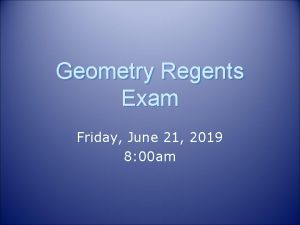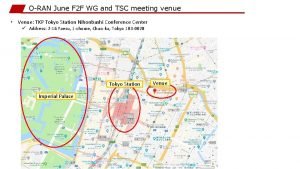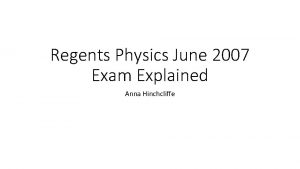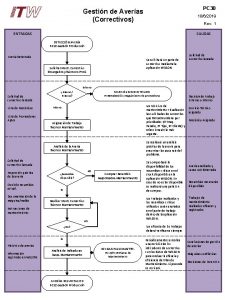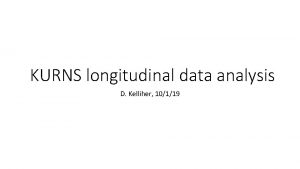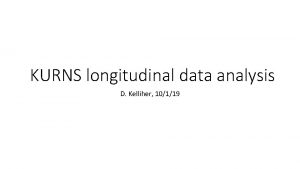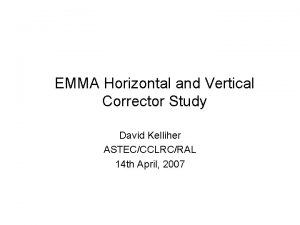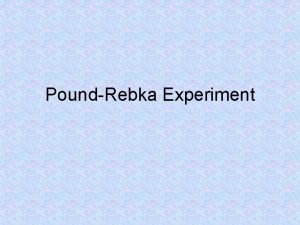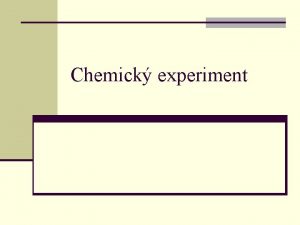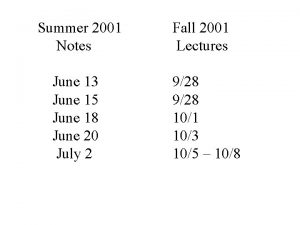June th 13 experiment D Kelliher 1862019 1962019



![Data list Experiment number Phase jump Scope time limit Scope time res [ns] 0 Data list Experiment number Phase jump Scope time limit Scope time res [ns] 0](https://slidetodoc.com/presentation_image_h2/ba6b8983d27135dfcf463a0373d723df/image-4.jpg)













![Location of peak just after phase jump Phase jump applied Phase [deg] dp 0 Location of peak just after phase jump Phase jump applied Phase [deg] dp 0](https://slidetodoc.com/presentation_image_h2/ba6b8983d27135dfcf463a0373d723df/image-18.jpg)

- Slides: 19

June th 13 experiment D. Kelliher, 18/6/2019 19/6/2019 update

Injection time 2

RF waveform – harmonic components. • RF voltage amplitude = +/- 2. 69 k. V assuming a gain of x 1000. • Assuming this voltage and a fixed energy gain 4*sin(20 deg) – the synchronous phase is 30. 57 deg (ignoring multi-harmonic effects). • Based directly on the measured waveform the synchronous phase is about 24 degrees. 3
![Data list Experiment number Phase jump Scope time limit Scope time res ns 0 Data list Experiment number Phase jump Scope time limit Scope time res [ns] 0](https://slidetodoc.com/presentation_image_h2/ba6b8983d27135dfcf463a0373d723df/image-4.jpg)
Data list Experiment number Phase jump Scope time limit Scope time res [ns] 0 0 2 ms 2 1 20 2 ms 2 2 -20 2 ms 40 3 -20 20 ms 40 4 10 2 ms 2 5 10 20 ms 40 6 0 20 ms 40 7 20 20 ms 40 4

5 10 deg 20 deg High resolution data 0 deg -20 deg

6 10 deg 20 deg High resolution data (from 0. 33 ms) 0 deg -20 deg

Symmetric phase Phase jump Zoom around phase jump “Symmetric phase” is found by minimising 7

Bunch monitor profiles before/after phase jump 8

Profiles at select turns 3 1 2 11 2 3 • The profiles look more peaked with a positive phase jump (2 and 3). However, note the difference just before the phase jump (1). 9

Profiles averaged over turns Maximum at ~16 deg Final 50 turns <Turn 400 -449> (just before jump) • Take the average of 50 or 500 profiles on consecutive turns. The error bar shows the standard deviation at each phase. • The vertical lines show the location of the maximum in the distribution over the final 500 turns. The corresponding phases range from 24. 8 – 28. 5 degrees. Final 500 turns 10

FWHM 11

Bunch integral (first 2 ms) Phase jump High res Low res (same time range) 12

Bunch integral (full cycle) Use mean integral in this range to establish normalization factor Low res (all data) Low res (normalized to baseline case) 13

Bunch integral (first resonance crossing? ) Normalised as in previous slide Zoom around dip at 3. 5 ms 14

Tomography – input data 20 degree phase jump. Magenta line: Phase at distribution maximum Black line: Symmetric phase. 50 MHz noise removed. Use 170 turns starting just after the phase jump in reconstruction. This is roughly half a synchrotron oscillation. Assume the synchronous phase is 24 deg, V = 2. 69 k. V. 15

dp/p axis is flipped! Phase space reconstruction Turn 1 (just after phase jump) Turn 26 Turn 51 Phase jump = 0 deg Phase jump = 20 deg 16

Turn 76 Phase space reconstruction Turn 101 Turn 126 Phase jump = 0 deg Phase jump = 20 deg 17
![Location of peak just after phase jump Phase jump applied Phase deg dp 0 Location of peak just after phase jump Phase jump applied Phase [deg] dp 0](https://slidetodoc.com/presentation_image_h2/ba6b8983d27135dfcf463a0373d723df/image-18.jpg)
Location of peak just after phase jump Phase jump applied Phase [deg] dp 0 2. 82 0. 0022 20 27. 53 0. 0028 -20 -18. 35 0. 0017 10 12. 24 0. 0024 18

• The symmetry phase minimum is consistent with where tomography indicates the bunch crosses the axis. • The location of the peak continues to move inwards as high amplitude particles reach the axis late. 19
 Rssl careers
Rssl careers Patricia kelliher
Patricia kelliher Britney spears
Britney spears Dr june james
Dr june james June 2019 geometry regents answers
June 2019 geometry regents answers April may june july august
April may june july august Good morning 1 june
Good morning 1 june June 22 to july 22
June 22 to july 22 Summary period: june 2021 poem
Summary period: june 2021 poem June's journey
June's journey June canavan foundation
June canavan foundation 2019 june calendar
2019 june calendar June 2021 english language paper 1
June 2021 english language paper 1 Companies in june
Companies in june June f
June f June 2007 physics regents
June 2007 physics regents June preschool newsletter
June preschool newsletter June too soon july stand by
June too soon july stand by Irpwm 2020
Irpwm 2020 I like school by lenore hetrick
I like school by lenore hetrick




